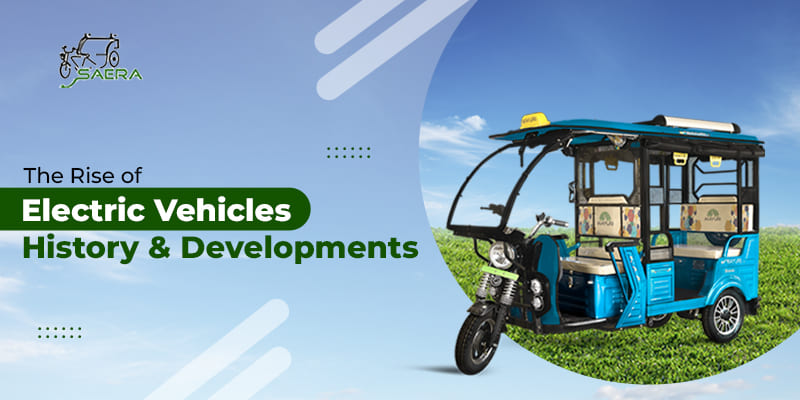Electric vehicles have a long history of almost a hundred years, resulting in the development of tech marvels like Tesla EVs or the very affordable e-rickshaws. In this blog, you will learn about the various phases of EVs and their origin.
The Beginning of the Electric Vehicle Era
The laid-back history of electric vehicles started around 1800 when England and France were the first to develop these battery-driven vehicles. Later, America came into the picture around 1895. The interest in these vehicles increased considerably by early 1900, resulting in a commercial electric vehicles fleet of taxis in New York City.
As the fuel price soared, it became one of the primary drivers of the ever-increasing demand for electric vehicles. Whether hybrid or all-electric, the popularity of electric vehicles is continuously increasing as they are affordable and run on batteries.
Curiosity at its Peak: Early development of Electric vehicles
From the Phaeton with a top speed of 14 mph and a range of 18 miles to the modern electric cars with a maximum speed of 75 mph and a range of 280 miles, EVs have witnessed a marvellous and rewarding development due to the hard work and curiosity of many engineers.
One of the engineers who made this possible was Scotland’s, Robert Anderson. His incredible invention, a motor carriage, was built between 1830 and 1840. This carriage was a kind of parlour trick that amused everyone. Galvanic cell batteries used in these vehicles were not rechargeable, which is why it was unsuccessful as transportation device. However, it gave a foundation to an era.
In 1841, a bigger and better prototype of Aberdeen was demonstrated by Robert Davidson, which could cover 1.5 miles at the speed of 4 mph. The performance impressively improved after getting new batteries, leading railway workers to bite their nails as they took it as a threat to their jobs and destroyed it. Rechargeable batteries came along in 1859, making the electric vehicles idea more feasible.
Another major development happened in 1890 when William Morrison, a Scotland-born chemist from Des Moines, Iowa, applied for a patent for his carriage, which ran at the top speed of 20mph. It had 24 batteries that needed to be recharged every 50 miles.
EVs from Electrobat to Electric Cab
Electrobat! Sounds interesting? It is the first commercially applicable EV effort by Pedro Salom and Henry G. Morris, which got a patent around 1894. At first, it was like a trolley car with steel tires and 1600 pounds of batteries, making it heavy and slow. By 1896, they got rear- steer carriages with 1.1-kW motors to move 20 to 25 miles at a speed of 20mph. Morris and Salom moved on to the revenue-generating phase with a successful startup after building an electric hansom cab.
Suggest Read: What are the Advantages of Electric Three-Wheelers?
Modern Electric Vehicles
In the late 1900s, electric three-wheelers became visible on the roads helping people to travel from one place to the other within a city. Then BHEL developed an electric bus that could carry up to 18 passengers in one go. E-rickshaw manufacturers in India also provided people with an environment-friendly alternative.
Today, EVs have become a go-to vehicle for many corporations for their fleets. Considering its drastic expansion, EVs may overtake conventional cars in the upcoming years.
Choose an Affordable and Eco-friendly Vehicle with Saera Electric Auto Private Limited!
Join the EV tribe with us at Saera Electric Auto Private Limited, one of the leading e-rickshaw manufacturers in India. Contact us today to learn more!

